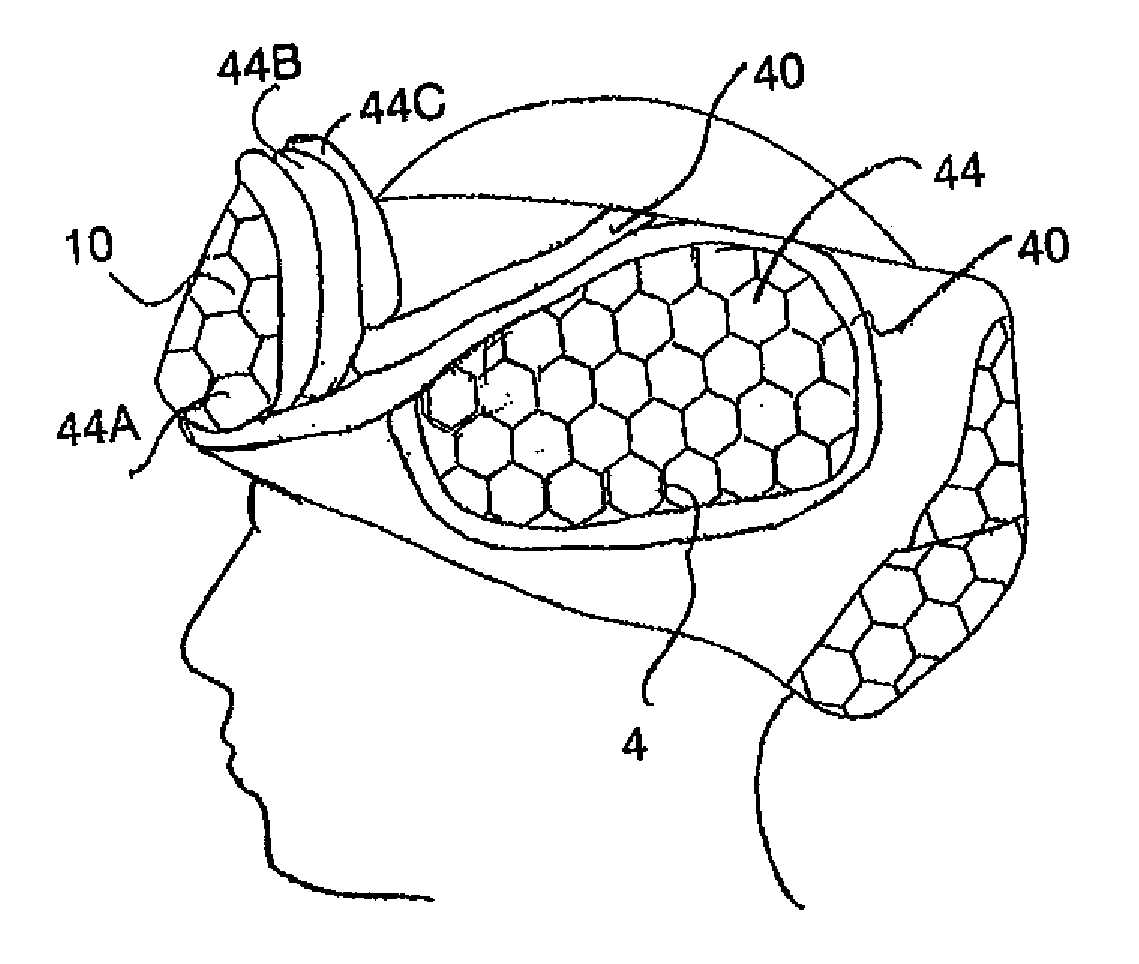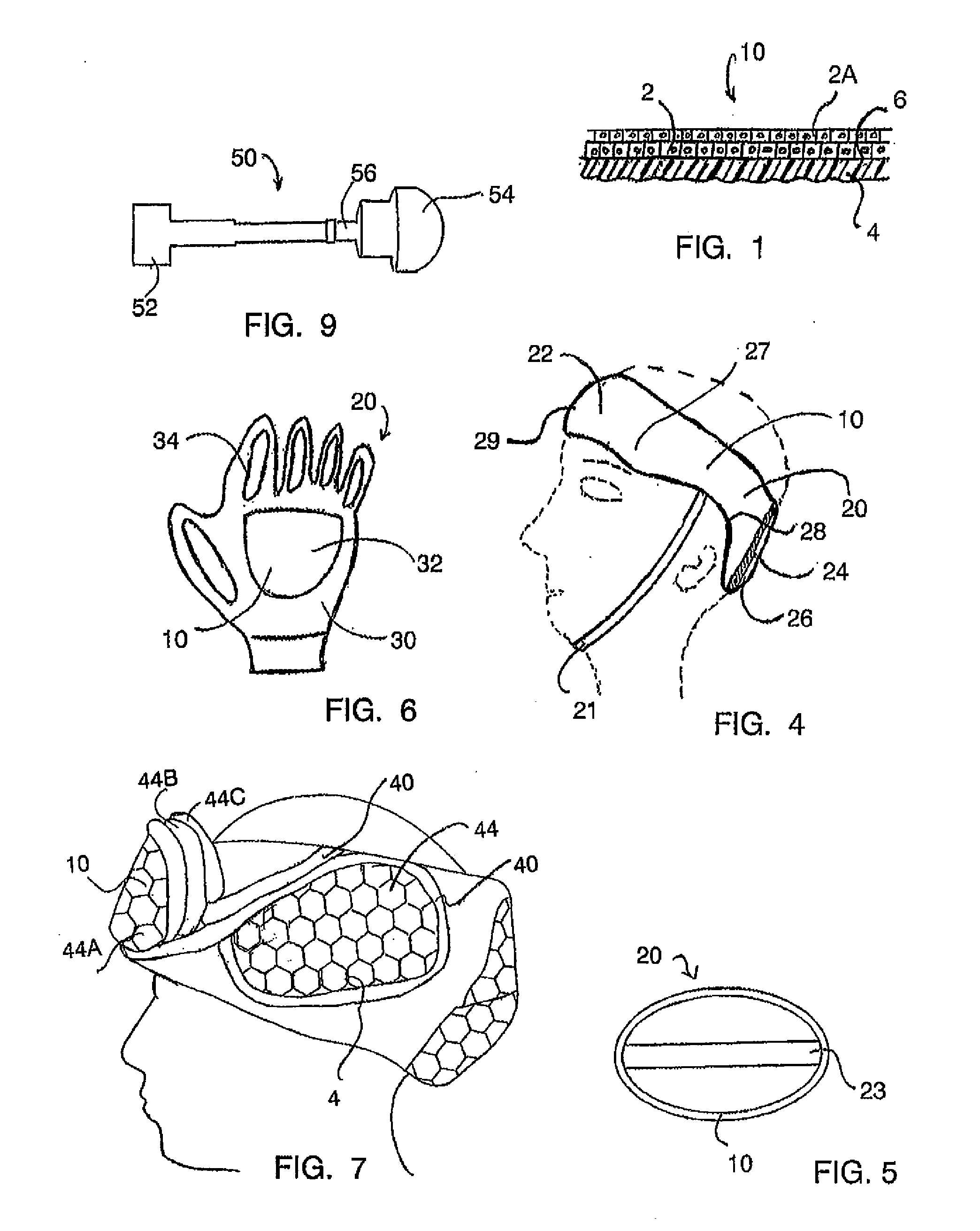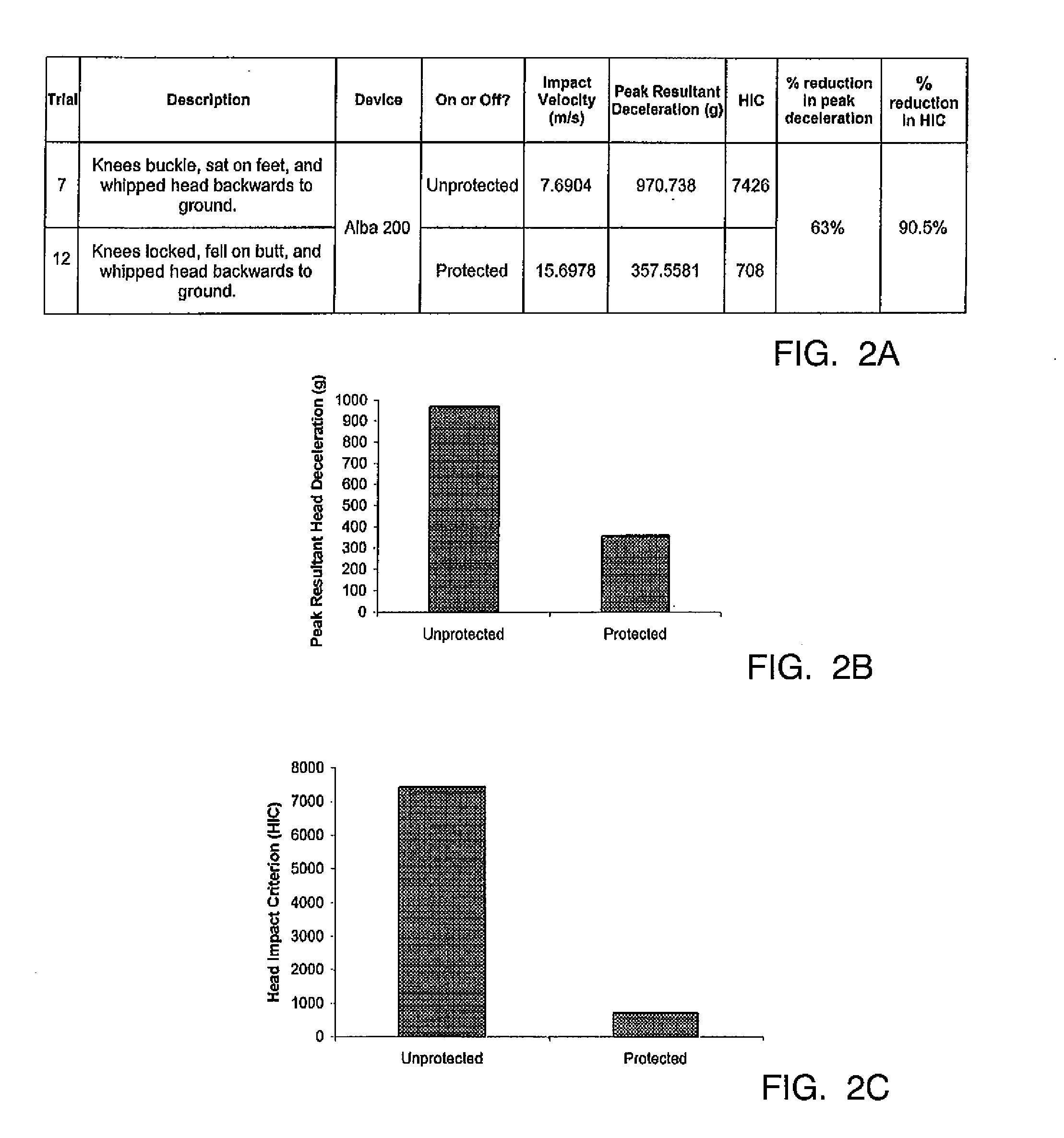Impact Shock Absorbing Material
a technology of shock absorption and impact shock, which is applied in the field of shock absorption materials, can solve the problems of not being suitable for long periods of wear or use while sleeping, reducing the chance of serious injury to the head, and reducing the actual amount of shock absorption. the effect of impact shock, reducing the actual amount of peak force transmitted, and light weigh
- Summary
- Abstract
- Description
- Claims
- Application Information
AI Technical Summary
Benefits of technology
Problems solved by technology
Method used
Image
Examples
second embodiment
[0046]FIG. 5 illustrates the protective gear 20, which has a parietal strap 23 for protecting the parietal region. The parietal region is the area least likely to be injured as a result of a fall, but in some cases it would be desirable to have a parietal strap 23 for added protection, such as when a patient is recovering from a brain injury or brain surgery, or confined to bed and subject to a head first drop. Ideally, the parietal strap 23 is made of a stretchable material, such as cotton knit, to account for various head sizes. The thickness of the impact-shock-absorbing material 10 may be thin, since this area is less likely to be injured during a fall. The chinstrap 21 and the parietal strap 23 may have fabric touch fasteners, or any other suitable fastening means for easy attachment to and removal from the headband 20.
third embodiment
[0047]FIG. 6 is an illustration the protective gear 20, a catcher's mitt 30, which has a palm section 32 and finger sections 34. These palm and finger section 32, 34 are padded with the impact-shock-absorbing material 10. The catcher's mitt 30 may be made of the conventional leather and look from the outside to be quite conventional. The palm section 32 and the finger sections 34 provide the mitt 30 with exceptional shock-absorbing capability. It is understood that the catcher's mitt 30 is provided as an illustration only of the use of the impact-shock-absorbing material 10 in body-protective sports gear, and that the material 10 is suitable for use in myriad types of protective pads and mitts, such as knee pads, shoulder pads, goalie's mitts, helmets, etc.
fourth embodiment
[0048]FIG. 7 illustrates the protective gear 20. The impact-shock-absorbing material 10 is edged with a flexible edging 40, such as a piping, tubing, or other thin, flexible material, to form a pad 44. Two or more pads 44 may be stitched together or otherwise connected to each other at the flexible edging 40. The purpose of constructing the protective gear 20 from a plurality of pads 44 connected to each other with the flexible edging 40 is to increase the flexibility of the protective gear 20 while still providing adequate protection around the entire skull. Ideally and reasonably, the pads 44 are sized and attached to each other, such, that the flexible edging 40 does not diminish protection against impact shock in a critical area. The pads 44 may be covered with a mesh covering or other breathable fabric. The pads 44 may also include one layer of the impact-shock-absorbing material 10 or more, depending on which part of the skull is being protected. For example, an area of the sk...
PUM
| Property | Measurement | Unit |
|---|---|---|
| weight | aaaaa | aaaaa |
| flexible | aaaaa | aaaaa |
| thickness | aaaaa | aaaaa |
Abstract
Description
Claims
Application Information
 Login to View More
Login to View More - R&D
- Intellectual Property
- Life Sciences
- Materials
- Tech Scout
- Unparalleled Data Quality
- Higher Quality Content
- 60% Fewer Hallucinations
Browse by: Latest US Patents, China's latest patents, Technical Efficacy Thesaurus, Application Domain, Technology Topic, Popular Technical Reports.
© 2025 PatSnap. All rights reserved.Legal|Privacy policy|Modern Slavery Act Transparency Statement|Sitemap|About US| Contact US: help@patsnap.com



